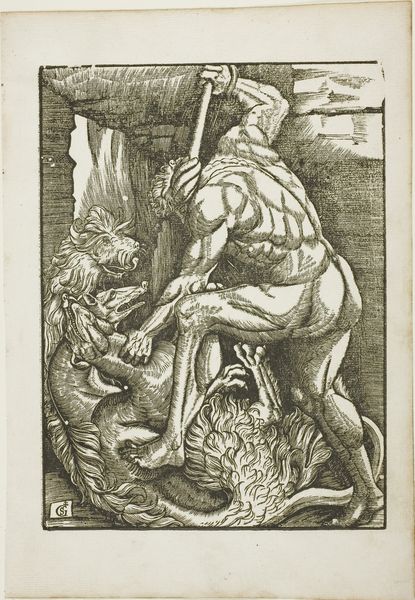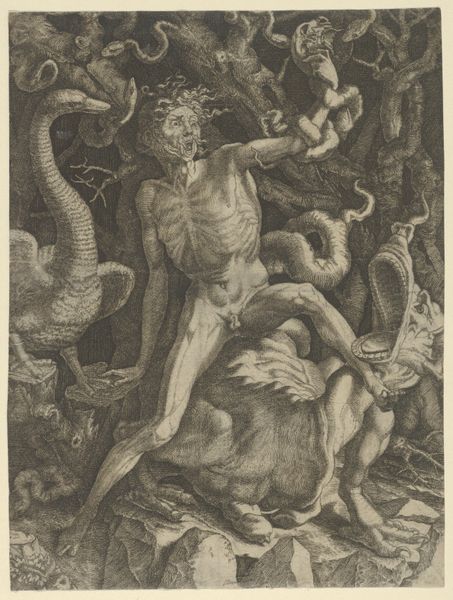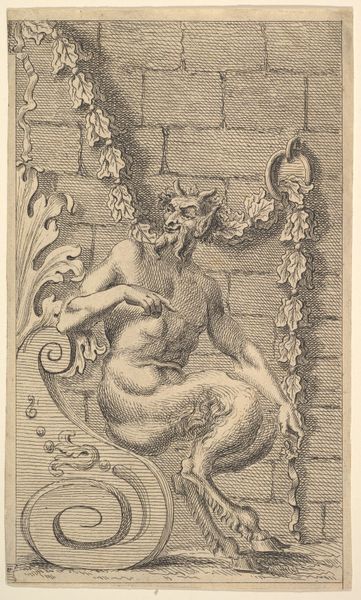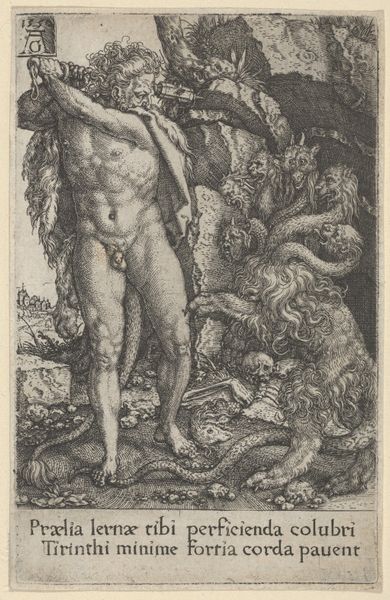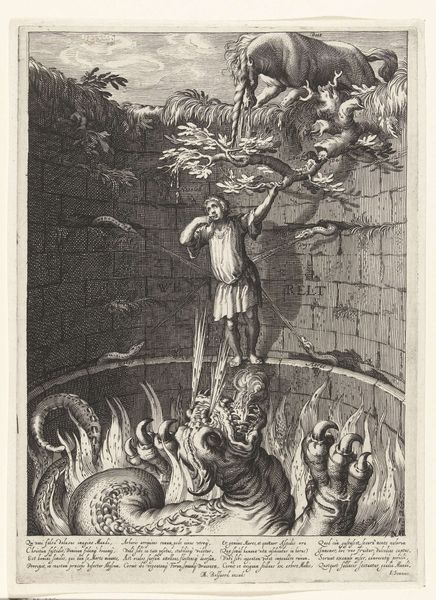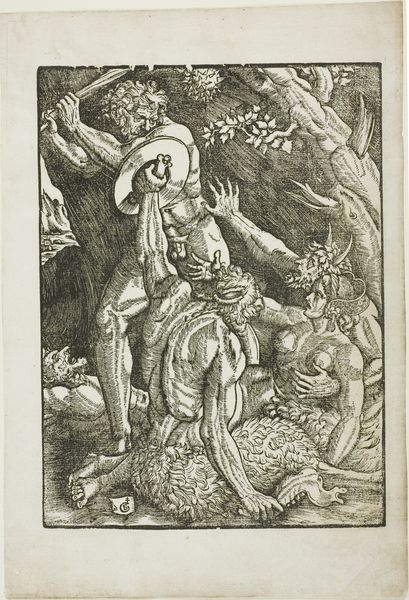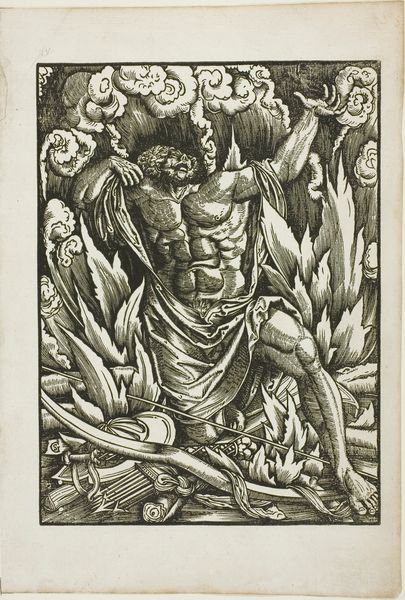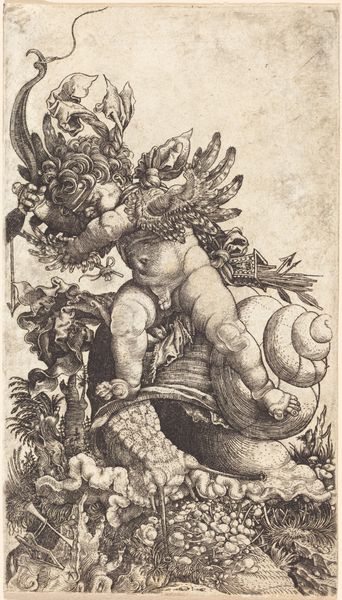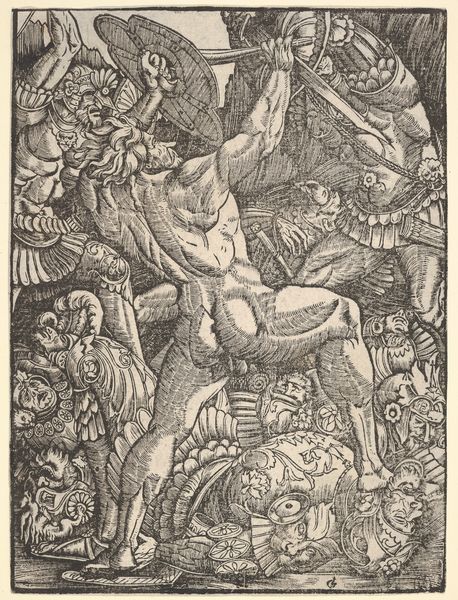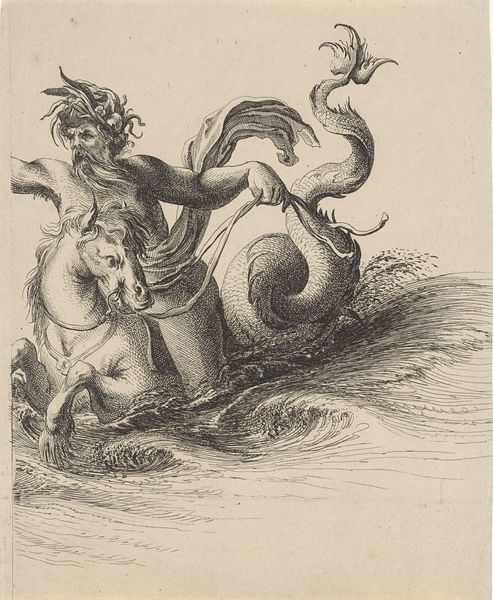
Hercules Killing the Lernean Hydra, from Scenes from the Life of Hercules c. 1528
0:00
0:00
drawing, print, intaglio, paper, engraving
#
drawing
# print
#
intaglio
#
figuration
#
paper
#
11_renaissance
#
line
#
history-painting
#
engraving
Dimensions: 197 × 147 mm (image/plate); 254 × 176 mm (sheet)
Copyright: Public Domain
Editor: This engraving, "Hercules Killing the Lernean Hydra" from around 1528, depicts that famous scene. The density of line work creates a pretty dramatic image, but all those hydra heads jumbled together are a bit confusing to untangle at first glance. How do you interpret this work? Curator: The confusion is key, isn't it? The Hydra, multiple heads sprouting anew when severed, is an ancient symbol, deeply rooted in anxieties about unchecked proliferation. Think about the context: 1528. What's proliferating then? Perhaps religious schisms, the spread of new ideas enabled by the printing press itself. Editor: So, the Hydra isn't just a monster. It's a symbol of something larger going on at the time? Curator: Precisely. Hercules, hacking away, embodies the struggle to contain these anxieties. Consider his Herculean effort. Isn’t the act of endless battling a symbolic one, indicative of larger societal anxieties being grappled with through allegory? Also, look at the wild-haired figure and his muscular physique—he harkens back to the classical ideal. It becomes a story about imposing order on chaos, of classical values taming the monstrous unknown. Editor: It's fascinating how much cultural meaning is packed into one image. Curator: Visual symbols evolve, taking on new layers of meaning with each telling. The engraver isn’t just illustrating a myth; they are engaging in cultural memory, tapping into our collective understanding of good versus evil and of order against chaos. Editor: It completely shifts how I see the piece, I’m going to have to explore this symbology further. Curator: Exactly, by viewing and thinking we can explore. What have you learnt from the symbolic, metaphorical density when viewing this work?
Comments
No comments
Be the first to comment and join the conversation on the ultimate creative platform.
